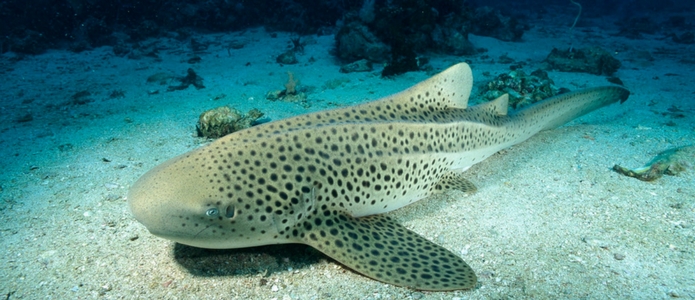

The question is, is this phenomenon exclusive to animals kept in captivity, or is it also something that could occur in the wild? This could prove to be a critical survival mechanism for the species, especially since it has been identified as an endangered species by the IUCN Red List. There are only two other instances of this occurrence – from an eagle ray and a boa constrictor, and both were held in captivity. In the case of Leonie, who was placed in a different tank from her mate after the pair was producing too many pups for the staff to handle, Dudgeon believes that the shark was simply adapting to her new circumstances. It seems captivity may play a role in this evolutionary shift. In Leonie’s case, she went from breeding with with Leo (the pair have more than 20 offspring), to asexually producing three pups years after she was moved away from her partner. So why all the fuss about Leonie giving birth asexually if other sharks have done the same thing? Well, in other cases where sharks produced asexually, there was no history of sexual reproduction at all. They'd only ever reproduced asexually. It’s more common among plants and invertebrate animals, but it has been known to occur among sharks and lizards. This phenomenon is extremely rare, but parthenogenesis – a process that prompts the development of embryos without the need for fertilization – does happen. Christine Dudgeon of University of Queensland’s School of Biomedical Sciences. We thought she could be storing sperm but when we tested the pups and the possible parent sharks using DNA fingerprinting, we found they only had cells from Leonie,” said Dr. "In April 2016 Leonie hatched three eggs, despite having no access to a mating partner for three mating seasons.

During the years in between, Leonie shared a tank with other female sharks, with no male contact – meaning Leonie just made history by becoming the first shark scientists have successfully observed making the switch from sexual to asexual breeding. But in April 2016, Leonie gave birth to three pups. "It could be much more common than we currently realise.In 2013, Leonie, a female zebra shark in a Queensland aquarium, was separated from her breeding partner, Leo. "It would seem to be highly advantageous," he said. It is possible that the switch from sexual to asexual reproduction is not that unusual we just haven't known to look for it, Dudgeon said.īonduriansky agreed, the New Scientist said. "Mum's genes get passed down from female to female until there are males available to mate with." "It might be a holding-on mechanism," Dudgeon says.

Nevertheless, it may be necessary at times when males are scarce. "It's not a strategy for surviving many generations because it reduces genetic diversity and adaptability." This also contains the female's genetic material, leading to "extreme inbreeding", she says. In sharks, asexual reproduction can occur when a female's egg is fertilised by an adjacent cell known as a polar body, Dudgeon said, according to the New Scientist. "However, it's much less common to observe switches in the other direction."ĭudgeon published a report on Leonie's unusual display of sexual behaviour in Scientific Reports.

"In species that are capable of both reproductive modes, there are quite a few observations of switches from asexual to sexual reproduction," Russell Bonduriansky at the University of New South Wales in Sydney told the New Scientist.


 0 kommentar(er)
0 kommentar(er)
